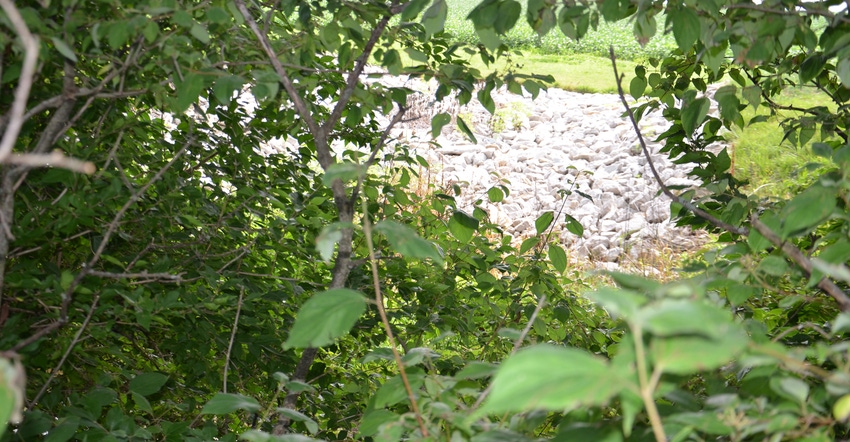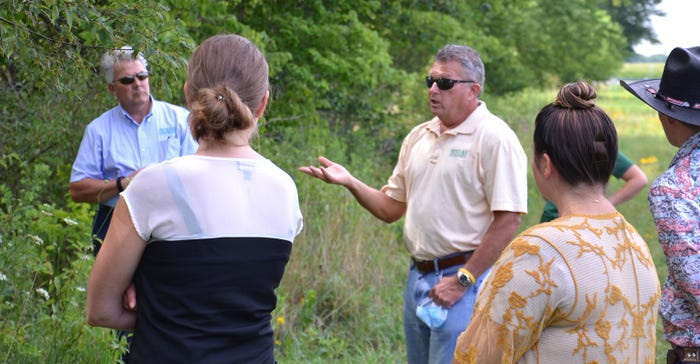
A rude awakening some first-time no-tillers experience is that even with no-till, they may not solve all soil erosion problems that impact their land. Where water concentrates in draws in rolling land, or where it enters large streams in a natural channel, it may take an investment in a conservation structure to augment no-till and cover crops. Reduced tillage does an excellent job of minimizing rill erosion, but it won’t resolve gully erosion where water concentrates.
“That’s why we need practices like grass waterways and rock chutes or other drop structures in certain situations,” says George Reger, a resource specialist and team leader for the Indiana State Department of Agriculture’s Division of Soil Conservation in northwest Indiana.
Recently, Reger explained the concept to new staff and interns at ISDA who visited Mike Starkey’s farm near Brownsburg, Ind., for some real-world farm experience. Standing along a creek that feeds into Eagle Creek Reservoir, a source of drinking water for Indianapolis, Reger described the value of a large rock chute on the opposite bank.
“Lots of acres are draining into the creek at that point, and without a structure to let the water move slowly down into the creek, it would create gullies and erode the banks,” Reger said. “We could have used other types of structures, but rock chutes tend to be cost-effective for what they accomplish.”
This particular rock chute is made from very large rocks. “The diameter of rock used will depend upon the size of the rock chute and the amount of water feeding into it,” he explained.

CONSERVATION PARTNERSHIPS: George Reger (center) explains how farmers, landowners and conservation agencies work together on large projects to get conservation on the land.

Reger is part of a team that works alongside Natural Resources Conservation Service staff and sometimes local soil and water conservation district employees to design and oversee construction of conservation structures. According to Reger, practices like waterways and rock chutes are more expensive than they were 10 to 20 years ago, but they’re still vital where they’re needed.
The percentage of cost-share help provided through USDA Farm Service Agency programs is also lower than it was a few years ago. However, cost share can still be a deciding factor in determining whether a farmer who owns the land opts to install the structure, or whether a tenant can convince a landowner that the structure is worth the investment. Conservation structures typically require a large upfront investment.
While talking to the ISDA visitors near the rock chute, Reger was standing in a filter strip that Starkey installed a few years ago along the stream bank. There is still cost share available in many cases for installing filter strips.
“They do a good job of catching water that might move off a field, and are valuable even in no-till systems,” Reger said. “There’s also an added benefit. When you leave a strip of grass along a stream bank, you don’t get the sprayer near the stream either. That can be a big plus.”
About the Author(s)
You May Also Like




